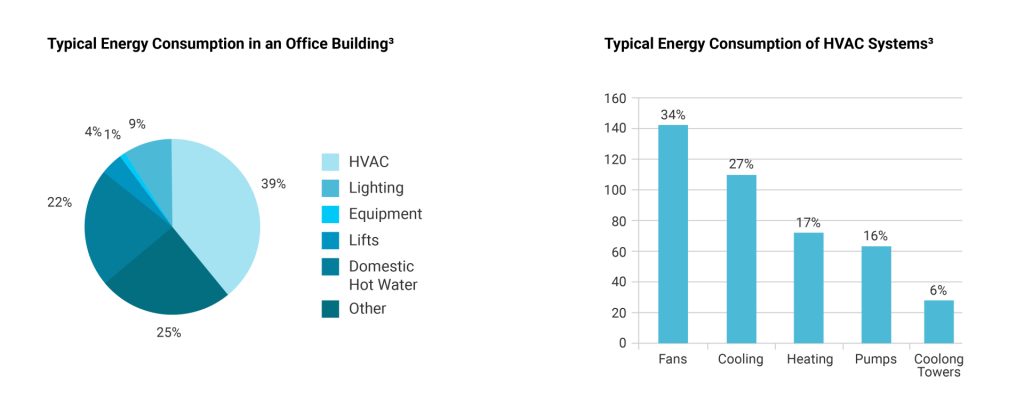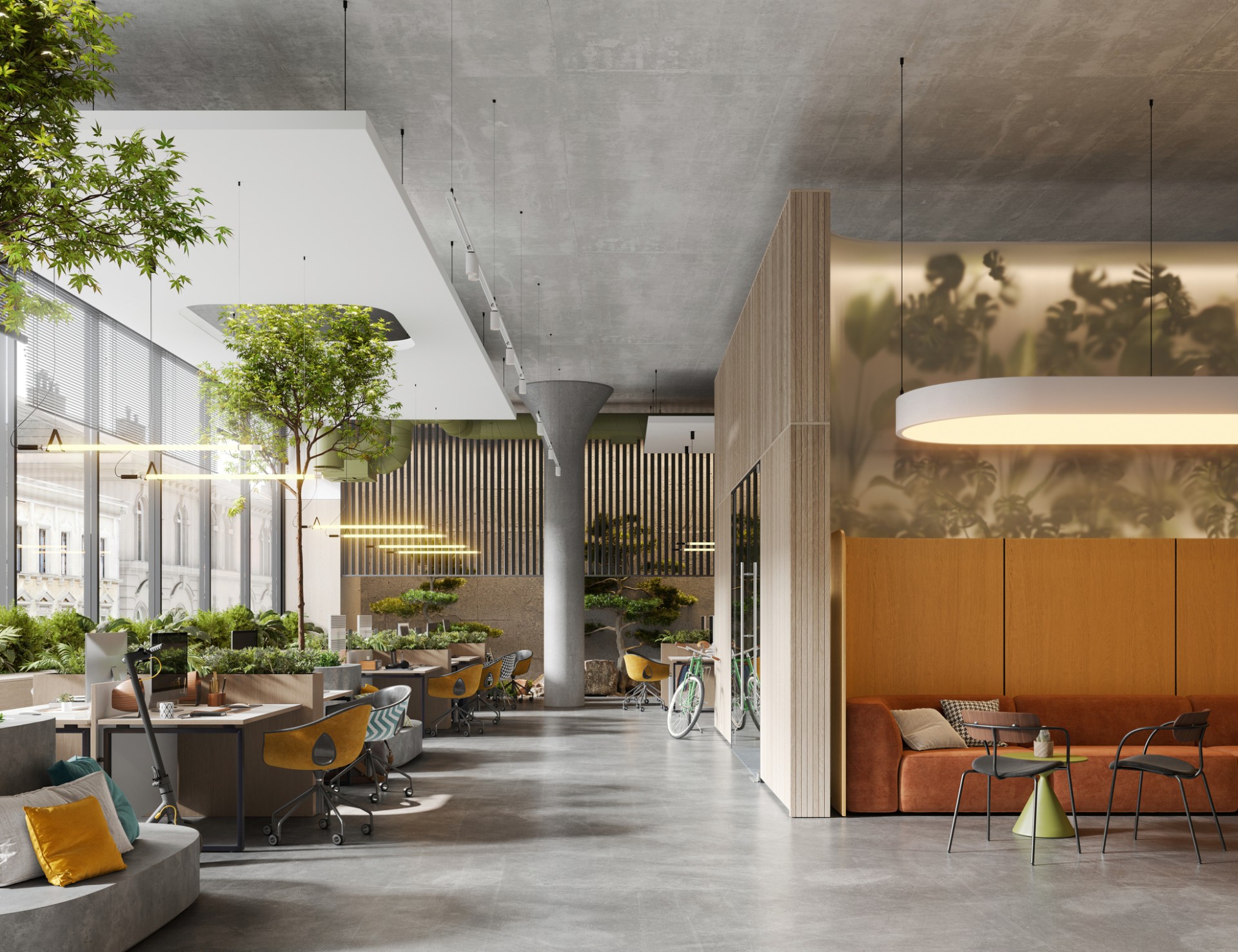The wow fact is – 80% of energy use across the lifecycle of your building is from the operation. Your biggest cost also signals your biggest opportunity.
More than ever, Facility Managers and IFM Service Providers can actively contribute to a sustainable future; identify and improve the operation of your assets now for a smarter and more sustainable building.
To gain a competitive edge, this is a critical investment area for returns and opportunities. Accessing quality data is pivotal to properly championing a green building.
-
Change is good
With fewer staff and visitors coming in and out of a building and a shift in what employees expect from an office space, Facilities Management Services (FMS) are very different now than pre-2019. Running sustainable workplaces in 2023 and beyond brings new challenges with twin objectives: the best-possible occupant experience and optimum operational efficiencies.
Most workplaces now advocate for a seamless, community-building experience for staff in hybrid and remote workplaces, on and off-site. Facility Managers must identify and adopt trends and tech that continually improve the employee experience.
-
FM tech
Data-driven tech is vital to next-gen FM. Numerous trends are now in play: using digital twin for holistic, real-time visibility, leveraging IoT to streamline operations and raising resilience through pre-emptive disaster mitigation plans. Then comes methods that employ automation to increase productivity and the implementation of Integrated Workplace Management Systems (IWMS).
FM software is evolving in line with the integration mindset. To track, manage and maintain a commercial building – smart tech uses IoT and connected devices to best equip on and off-site workers by generating, collecting, and managing data. The result? Fewer mistakes and liability and better data-driven decisions. Applying tech-driven preventive maintenance reduces costs, downtime and failures while increasing production and revenue.
-
Certifiable building health
To reduce the harm caused by facilities, assets and transportation – achieving and maintaining building health and sustainability certifications are vital for cost saving and innovation. Here are the ones to keep on your radar:
- WELL: This Building Standard is a holistic roadmap to achieving sustainability goals and improving the health and well-being of your occupants. Given we spend 90% of our time indoors, this optional rating highlights excellence by certifying how a building impacts humans. It achieves this by measuring air, water, nourishment, light, fitness, comfort and mind.
- Fitwel: As a world-leading certification system, Fitwel has a vision for universal building health. Built on academic research studies, Fitwel rates the performance of a space across the categories of location, building access, outdoor spaces, entrances and ground floor, stairwells, indoor environments, workspaces, shared space, water supply, cafeterias and prepared food retail, vending machines and snack bars, and emergency procedures.
- RESET: Regenerative, Ecological, Social & Economic Targets (RESET) is a sensor-related standard based on real-time data and continuous monitoring. RESET Air for Commercial Interiors measures and shares the air quality created by the air system with building occupants. RESET Air for Core & Shell measures the air quality of the entire building, created by the air system to share with potential tenants.
- NABERS: The National Australian Built Environment Rating System (NABERS) measures the environmental impact of a building or tenancy. It assesses a building’s energy efficiency, the management of waste, the water usage and quality of the indoor environment and its greater environmental impact. NABERS has saved users 1.4 billion dollars in energy bills and 9.9 million tonnes of CO2 emissions and has rated 90% of office space in Australia.
- LEED: This global certification acknowledges excellence in sustainability. As an optional rating, LEED is coveted by high-performing buildings and championed by individuals and organisations working to transform the health, liveability and environmental soundness of built spaces.
- BREEAM: This globally recognised tech standard is an environmental assessment for new buildings, fit-outs and refurbishments. It measures sustainable value through management, health, energy, transport, water, materials, waste, land use and ecology, pollution and innovation. This rating aims to improve sustainability.
- Green Star: This homegrown sustainability rating system certifies design, construction, operation, fit-out and communities. Now internationally recognised, the Green Star standard raises the bar for resilient, positive, healthy buildings using the grading mechanisms of liveability, economic prosperity, environment, design, governance and innovation.
-
Smart control

-
HVAC improvements
The HVAC system you select is everything: heating, ventilation and air conditioning (HVAC) can constitute 50% of your energy bill. Significant energy savings demand choices like a Variable Air Volume (VAV) that can control the volume of air supplied to spaces based on how much heating or cooling is needed.
Plant Selection, evaporative pads, insulation, installing energy-tracking meters and timers, operational system controls, and an economy cycle will also improve your building’s energy efficiency. More than anything else, ongoing tuning and HVAC system repair will allow it to function optimally.
-
Leverage LEDs
Lighting = almost 5% of global CO2 emissions. Accounting for an average of 10% of the total household budget, this also illuminates a cost-saving opportunity for commercial property owners. Thinking of swapping incandescent and halogen lighting for LEDs? Not just better value for money, LEDs consume 75% less energy and have a lasting power of up to 5-10 times longer than halogen.
If you need further convincing – LEDs save landfill and can be paid back in less than a year. Beyond being greener, LEDs cast better light and come immediately to full light with no warm-up time. You can also dim them, increasing their lifespan up to 10 x a traditional bulb, and use 60% less energy, lessening costs. Frequently turning LEDs on and off without degrading light quality or bulb is also a bonus.
-
Good Sense
Yep – sensors make sense. You can turn off lighting for a room, a floor or an entire building, and they can even auto-respond to how much sunlight a space gets. Combining LEDs with motion sensors is an energy-saving win.
Proximity sensors are even smarter – they change the infrared light caused by the heat from human movement, which triggers the light. Adjusting sensitivity, range and time of motion allows for further efficiency. Sensors act differently depending on placement: wall or ceiling.
-
Solar panels
To generate clean energy, schedule energy audits. One of the largest costs of running a commercial building is energy. While the ouch factor of the outlay is inevitable, going solar is recouped by lower electricity bills. Solar panels will even up the eventual sale value of your building.
Solar also ensures your building still runs during blackouts. And maintenance on panels is minimal; they need washing every so often. Solar panels on your building show the world you care about emissions and actively work to reduce your carbon footprint. As technology advances, solar benefits will amplify, so you can’t lose.
-
Win/win/win/win
Reaching your ESG targets through multiple sustainable building and operating practices is advantageous for you, your building, your people and the environment. That’s a lot of impact for very achievable actions.
-
Get greener
Tech is the frontier for sustainable buildings. To invest and transform your business, reach out to our Sustainability Team. Learn how we can help you lean into FM sustainability trends, make your facility more energy efficient and surpass your ESG targets.

